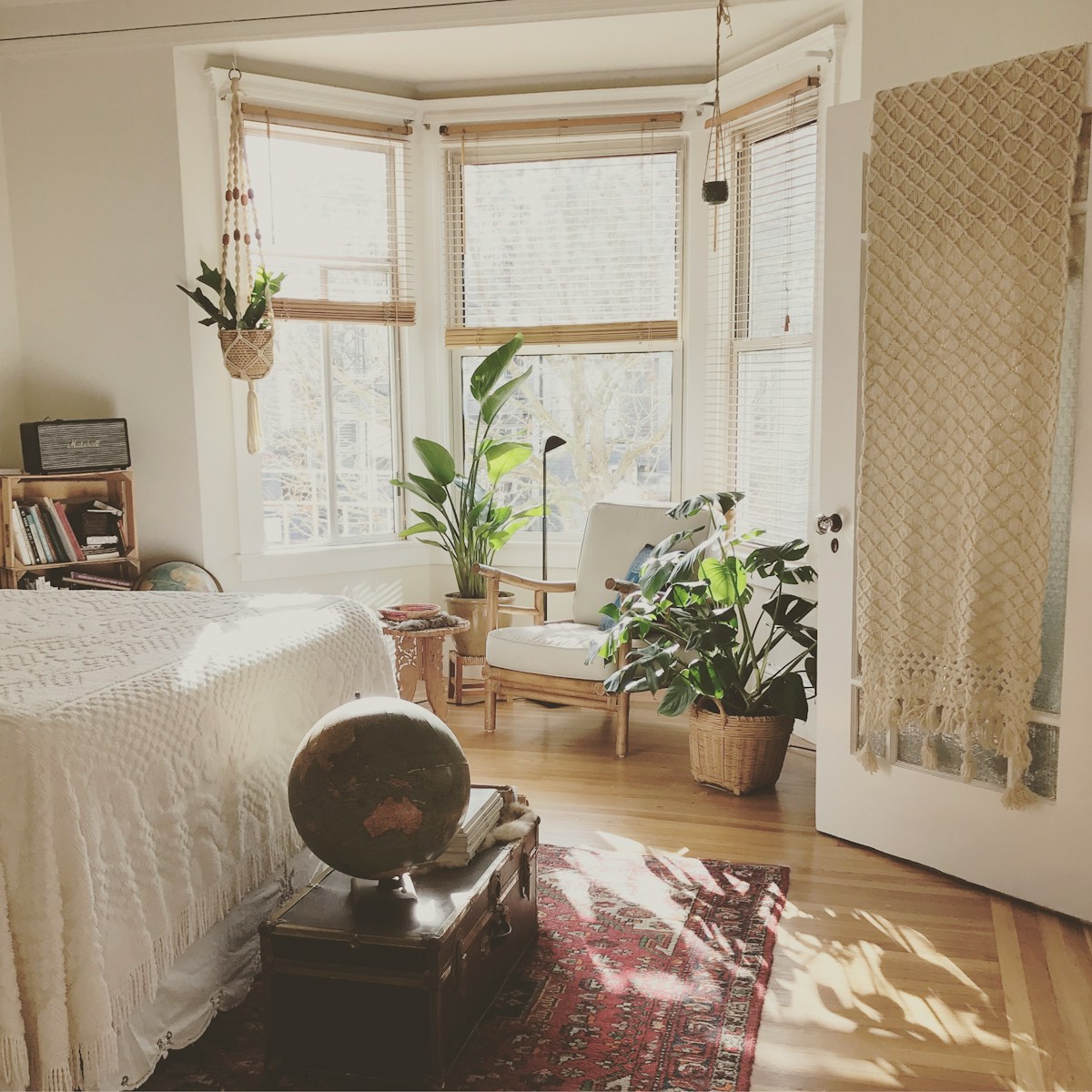Air Quality Matters: Simple Strategies to Eliminate Indoor Pollution
The Invisible Threat Lurking Indoors
Air quality isn’t just about the air you breathe outdoors—it’s equally vital inside your home. Yet, indoor air pollution often goes unnoticed, silently undermining health and well-being. From headaches and allergies to long-term respiratory conditions, poor air quality poses a pervasive risk that is far too easy to ignore.

Modern living has introduced a host of pollutants into our spaces, including volatile organic compounds (VOCs) from furniture, microscopic particles from cooking, and allergens trapped in sealed environments. While these issues might seem minor in isolation, together they can create an environment detrimental to your health.
By prioritizing air quality and taking simple, strategic actions, you can transform your home into a haven of clean, breathable air. This guide explores practical solutions to tackle indoor air pollution, ensuring your living space supports your health and vitality every day.
Understanding Air Quality: More Than Just Fresh Air
What Defines Good Air Quality Indoors?
Air quality isn’t just about the absence of dust or visible particles. It encompasses a balance of oxygen, humidity, and pollutant-free air. Clean air indoors means minimal particulate matter, reduced allergens, and no harmful chemicals lingering in your space. By understanding these elements, you can create an environment that fosters health and productivity.
The Components That Influence Indoor Air Quality
Several factors determine indoor air quality, including particulate matter, volatile organic compounds (VOCs), and biological contaminants like mold and bacteria. Particulate matter can originate from cooking, smoking, or even candles. VOCs, released by household items, can accumulate without adequate ventilation. Mold thrives in damp conditions, further degrading air quality. Recognizing these elements helps you target pollution sources effectively.
Why Air Quality Matters More Than You Think
Indoor air pollution impacts your health in profound ways, often without immediate symptoms. Poor air quality can exacerbate asthma, trigger allergies, and contribute to chronic respiratory issues. Beyond physical health, bad air quality can affect focus, energy levels, and sleep quality. Addressing it is a key step in creating a home that supports your well-being.
Building Awareness of Air Quality Problems in Your Home
Many homes suffer from poor air quality due to a lack of ventilation and unchecked pollutants. Simple observations can reveal problems. Musty odors, excessive dust, or persistent humidity indicate that your air quality needs improvement. By identifying these signs early, you can take proactive measures to eliminate indoor pollution and safeguard your health.
The Surprising Sources of Indoor Pollution
Everyday Activities That Harm Indoor Air Quality
Daily routines often contribute to declining air quality without notice. Cooking on gas stoves, burning candles, and cleaning with harsh chemicals release harmful particles. Even harmless-seeming habits, like overusing air fresheners, can worsen indoor pollution. Understanding how these activities affect air quality helps you adjust behaviors to create a healthier space.
Household Materials That Compromise Air Quality
Many household items quietly degrade air quality over time. Furniture, carpets, and paints often emit volatile organic compounds (VOCs) as they age. These emissions, though invisible, linger and contribute to poor air quality. Synthetic fabrics and plastic materials can also release microplastics into the air, further polluting your environment.
Seasonal Pollutants That Affect Air Quality Indoors
Changes in weather bring new challenges for indoor air quality. Spring pollen often invades homes, triggering allergies and respiratory discomfort. During colder months, sealed windows trap in pollutants, making ventilation critical. Seasonal shifts require consistent efforts to maintain good air quality throughout the year.
How Hidden Contaminants Threaten Air Quality
Invisible contaminants often cause significant harm to air quality. Mold spores, dust mites, and pet dander are common culprits lurking in overlooked areas. These pollutants thrive in poorly cleaned or ventilated spaces, quietly reducing air quality. Addressing these hidden threats is essential for improving the air you breathe.
By identifying and addressing these sources of indoor pollution, you can make lasting improvements to your home’s air quality. Simple awareness of the causes is the first step toward creating a healthier living environment.
Ventilation: The Foundation of Fresh Indoor Air
Why Ventilation is Vital for Air Quality
Proper ventilation is essential for maintaining healthy air quality inside your home. It allows pollutants to exit and fresh air to enter. Without adequate ventilation, harmful particles and odors accumulate, creating a stagnant environment. Consistent airflow is crucial for balancing air quality and improving overall indoor comfort.

The Role of Natural Ventilation in Air Quality
Natural ventilation is one of the simplest ways to improve air quality. Opening windows and doors creates cross-ventilation, flushing out pollutants. This practice is especially effective during cooking or cleaning, activities that often release harmful particles. Regularly airing out your space supports better air quality with minimal effort.
Advanced Ventilation Systems for Air Quality Optimization
Modern ventilation systems are designed to enhance air quality more effectively than ever before. Heat recovery ventilators (HRVs) and energy recovery ventilators (ERVs) bring fresh air indoors while minimizing energy loss. These systems filter incoming air, removing allergens and pollutants that degrade air quality. Investing in advanced ventilation ensures a consistent supply of clean air.
How Exhaust Fans Support Air Quality
Exhaust fans play a critical role in improving air quality by removing moisture, odors, and airborne contaminants. Kitchens and bathrooms benefit most from these devices, as they target areas prone to pollution buildup. Using exhaust fans regularly keeps air quality in check, especially in high-activity spaces.
Proper ventilation is the cornerstone of maintaining good air quality. By incorporating natural airflow and advanced systems, you can create a cleaner, healthier indoor environment. Regularly evaluating your ventilation practices ensures lasting improvements in the air you breathe.
Harnessing Nature: Green Plants and Air Quality
The Connection Between Greenery and Improved Air Quality
Houseplants are more than decorative elements; they actively improve indoor air quality. Many plants filter toxins and release oxygen, enhancing the atmosphere. Adding greenery to your home creates a natural solution for maintaining cleaner and healthier air.
Best Plants to Boost Air Quality Indoors
Certain plants are particularly effective at improving air quality. Spider plants, peace lilies, and snake plants are known for filtering harmful toxins. These plants require minimal maintenance, making them ideal for anyone looking to improve their indoor environment. Strategically placing them in high-traffic areas helps optimize air quality throughout your home.
How Plants Remove Pollutants to Support Air Quality
Houseplants absorb pollutants through their leaves and roots, improving air quality. This natural process, called phytoremediation, reduces toxins like formaldehyde and benzene. By harnessing this ability, you can lower harmful chemical levels in your indoor space.
Maximizing the Air Quality Benefits of Indoor Plants
To make the most of your plants, ensure they receive adequate light and water. Clean their leaves regularly to enhance pollutant absorption. Overcrowding plants can hinder their effectiveness, so provide ample space for optimal air quality improvement.
Integrating houseplants into your home supports better air quality while adding a touch of nature to your living space. Thoughtful plant selection and care amplify their ability to filter toxins and promote a healthier environment.
Technology to the Rescue: Air Purifiers and Smart Solutions
How Air Purifiers Improve Indoor Air Quality
Air purifiers are an effective way to enhance air quality in your home. They remove pollutants like dust, allergens, and smoke. By capturing these particles, purifiers ensure cleaner air for better respiratory health and overall comfort.
Choosing the Right Air Purifier for Air Quality Optimization
Not all air purifiers are created equal when it comes to air quality improvement. High-efficiency particulate air (HEPA) filters are essential for capturing fine particles. Models with activated carbon filters help eliminate odors and harmful chemicals, offering a comprehensive solution for air quality enhancement.
Smart Air Quality Monitors: Real-Time Insights for Cleaner Air
Smart air quality monitors provide real-time data about the air in your home. These devices detect pollutants and alert you to issues. Some systems sync with purifiers, adjusting settings automatically to improve air quality. Investing in this technology creates an active approach to maintaining clean indoor air.
Integrating Technology to Sustain Long-Term Air Quality
Combining air purifiers and smart monitors ensures a proactive approach to air quality management. Regular maintenance, such as replacing filters, maximizes performance. This integration of technology and upkeep supports consistently healthier air over time.
Air purifiers and smart solutions offer advanced tools to maintain superior air quality. By selecting the right devices and using them effectively, you can create a healthier, more breathable living space.
Combatting Humidity: Balancing Moisture for Better Air Quality
Why Humidity Control is Essential for Air Quality
Humidity levels directly impact air quality and comfort in your home. Excessive moisture encourages mold growth, while low humidity irritates respiratory systems. Maintaining the right balance ensures cleaner, healthier air while protecting your home from damage caused by dampness or dryness.
How High Humidity Affects Air Quality and Health
High humidity can degrade air quality by creating an environment where mold and mildew thrive. These pollutants release spores into the air, which trigger allergies and respiratory issues. Persistent moisture also encourages dust mites, further reducing air quality and affecting indoor comfort.
The Role of Dehumidifiers in Maintaining Air Quality
Dehumidifiers help regulate indoor humidity levels, preventing excess moisture that can compromise air quality. These devices extract water from the air, keeping your home dry and mold-free. Using a dehumidifier regularly is a simple way to maintain optimal air quality, especially in damp areas like basements.
When Low Humidity Becomes a Threat to Air Quality
Low humidity can also harm air quality by causing dryness that irritates nasal passages, throats, and skin. During colder months, heaters often lower indoor moisture, making humidifiers essential. These devices restore balance, protecting your health and improving air quality in the process.
Achieving the Perfect Balance for Consistent Air Quality
The ideal indoor humidity level for air quality is between 30% and 50%. Monitoring this range helps you address moisture issues promptly. Using a hygrometer, a simple device that measures humidity, ensures your home maintains this balance effectively.
By managing humidity levels carefully, you can protect your home and health while sustaining optimal air quality. This approach supports a more comfortable and healthier indoor environment year-round.
The Role of Regular Maintenance in Air Quality Management
How Maintenance Improves Air Quality Over Time
Routine maintenance is key to sustaining good air quality. Regularly cleaning and servicing ventilation systems prevents the buildup of dust and allergens. A well-maintained home ensures consistent airflow and cleaner air, which protects your health and enhances comfort.

Air Quality and HVAC Systems: The Connection
Your HVAC system plays a significant role in air quality by regulating temperature and airflow. Without proper care, it can become a breeding ground for dust, mold, and bacteria. Cleaning ducts and replacing filters regularly ensures that your HVAC system functions efficiently, promoting better air quality.
Why Air Filters Matter for Air Quality
Air filters are essential for trapping airborne particles such as dust, pet dander, and pollen. Over time, filters become clogged, reducing their effectiveness. Replacing them on schedule ensures that your system continues to improve air quality, maintaining a healthy indoor environment.
Cleaning and Repairing Ductwork for Optimal Air Quality
Ductwork accumulates dust and debris over time, which can degrade air quality. Regular cleaning and inspections of ducts prevent the spread of contaminants throughout your home. Ensuring that your ducts are free from leaks or blockages improves airflow and keeps air quality at its best.
The Impact of Regular Maintenance on Long-Term Air Quality
Proactive maintenance allows you to identify potential problems early, preventing long-term damage to air quality. Staying on top of cleaning tasks and system checkups ensures that your home’s air remains fresh, clean, and free from harmful pollutants.
Regular maintenance is a foundational step in managing air quality. By keeping your systems clean and functioning optimally, you ensure that the air you breathe stays fresh and healthy.
Toxins in Disguise: Minimizing Chemical Exposure Indoors
How Chemicals Threaten Air Quality and Health
Many household products contain chemicals that degrade air quality without you even realizing it. Cleaning agents, paints, and adhesives release volatile organic compounds (VOCs) into the air, harming your health over time. These chemicals contribute to respiratory issues, headaches, and long-term health conditions.
Reducing Chemical Exposure for Better Air Quality
Switching to natural or non-toxic cleaning products can drastically improve air quality. Many brands now offer alternatives that are just as effective without the harmful chemicals. Opting for VOC-free paints, furniture, and finishes helps create a healthier environment by reducing indoor pollutants.
The Dangers of Synthetic Fragrances on Air Quality
Synthetic fragrances in air fresheners, candles, and cleaning products can worsen air quality. These fragrances often contain harmful chemicals like phthalates, which can disrupt hormone balance and irritate the respiratory system. Replacing synthetic products with natural scents, such as essential oils, enhances air quality while avoiding toxic exposure.
Storing Chemicals Safely to Protect Air Quality
Even everyday household chemicals can pose a risk to air quality if stored improperly. Keep cleaning products, paints, and solvents in tightly sealed containers in a cool, dry place. This prevents harmful fumes from seeping into your living spaces and compromising indoor air quality.
Building a Chemical-Free Home for Better Air Quality
Adopting a chemical-free lifestyle may take time, but the impact on air quality is significant. By choosing non-toxic alternatives and minimizing exposure to harmful substances, you actively protect your home’s air and your health. The effort to reduce chemicals creates a cleaner, fresher environment for you and your family.
Minimizing chemical exposure is crucial for maintaining excellent air quality. By choosing safer products and proper storage methods, you reduce indoor pollution and improve the air you breathe every day.
Building a Habit of Air Quality Awareness
Making Air Quality a Daily Priority
Air quality should be a central concern in your daily routine. Small actions, like opening windows or using air purifiers, can significantly impact the air you breathe. By making these practices a habit, you ensure that your home remains a healthy space.
How to Stay Consistent in Improving Air Quality
Consistency is key when it comes to maintaining air quality. Regularly check air filters, clean ducts, and monitor humidity levels. These small steps, done routinely, prevent indoor air pollution from building up and keep the air fresh and clean.
Integrating Air Quality Practices Into Your Lifestyle
Creating an air quality-conscious environment doesn’t require major lifestyle changes. Simple adjustments, such as choosing low-VOC products or using plants to purify the air, can make a lasting difference. Making these habits a part of your life ensures long-term benefits for both your health and your home.
Educating Others About the Importance of Air Quality
Sharing your knowledge about air quality with family members or housemates can help create a collective effort to maintain healthy air. By educating others, you strengthen your commitment to improving air quality and inspire those around you to do the same.
Maintaining a Long-Term Commitment to Air Quality
Air quality isn’t a one-time fix—it requires ongoing attention. By staying informed and proactive, you can ensure that your home continues to provide clean, breathable air. This long-term commitment will pay off in better health, comfort, and overall well-being.
By building awareness and making air quality a priority, you can create a healthier living environment. Consistent efforts lead to lasting improvements in the air you breathe, benefiting everyone in your home.
